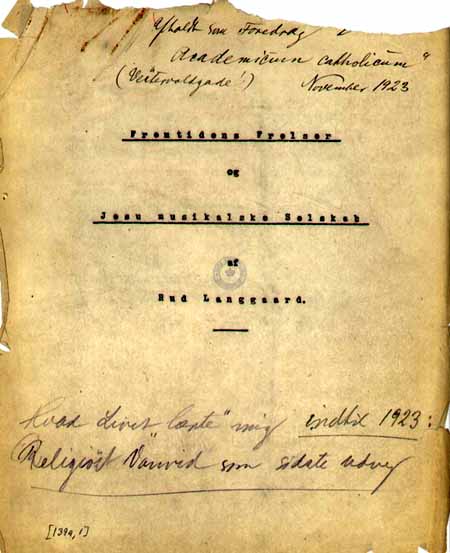A Biographical Multimedia Mosaic...
The Saviour of the Future and the Musical Society of Jesus
Langgaard left a manuscript - unfortunately not completed - entitled Fremtidens Frelser og Jesu musikalske Selskab (The Saviour of the Future and the Musical Society of Jesus), in which he outlined a religious society of the future, a society (in the broad sense) in which art and the church were combined and had become the dominant cultural factor. Langgaard was inspired by Wagner's ideas about an art-religion, by Nietzsche, and by the Theosophical movement, especially the Star in the East movement, the spiritual leader of which was the young Jiddu Krishnamurti (1896-1986).

The title page of Langgaard's manuscript, some of which was delivered as a lecture in 1923, but has otherwise never
been published.
One of Langgaard's ideas was that through "spiritual exercises" based on those set out by the founder of the Jesuits, Ignatius Loyola, one could learn to master a religious-musical symbolic language, which would enable one to understand "the music of the future" - or what Langgaard called "The Music of All Things".
By this Langgaard meant a kind of music that could express religious feelings and the existential condition in such a precise and logical way that they would not only be understood intuitively, but intellectually as well.
Langgaard never succeeded, however, in composing works based on these presuppositions, though the music he envisaged was clearly something along the lines of the opera, Antikrist (Antichrist), and Symphony No. 6, examples from which he adduces in his manuscript.
The whole thing was an experimental exercise, as Langgaard later admitted. As may be seen in the reproduction above he added the folowing comment to the title page of the manuscript: "What life 'taught' me until 1923: Religious Madness as the last resort".